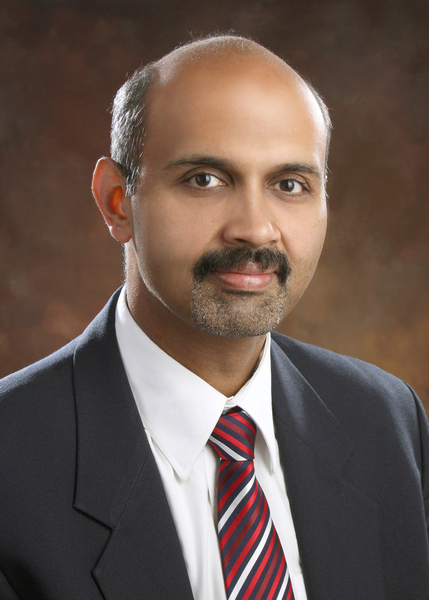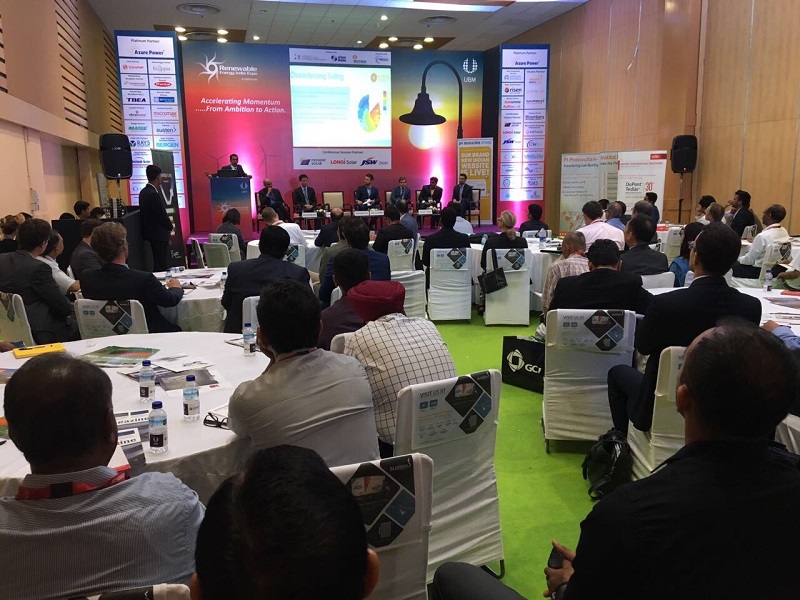pv magazine: We will hear a presentation from PI Berlin about six projects in India, which were inspected. Unfortunately, module problems were discovered at some of the sites, including delamination and faulty solders. How would you describe module quality in 2018 in the India marketplace?

Rajaram Pai: As we are aware, modules in India are subject to climatic extremes, including higher solar insolation, UV, temperatures, dust, precipitation, compared with several countries where solar installations have happened. The combined effect of these stresses is swifter and there is earlier manifestation of project performance issues, when adequate attention has not been accorded to the selection of modules, inverters, structures or design. In India, our field studies have revealed significant variations at installations where attention to technical detail ahead of COD and at those where requisite O&M practices have not been pursued.
Do you feel that Bureau of Indian Standards (BIS) implementation will have an impact in improving this situation?
It’s a good step for the Indian PV market to have BIS standards that can incorporate local climatic conditions into the incumbent standards. However, the standards for selection of Bill of Materials (BoM), along with module and equipment testing, need to be significantly strengthened and similar to those in PV mature countries like China. Coinciding with these standards, there is a need to establish accessible, robust testing infrastructure, and institutions to drive the enforcement of the announced standards.
pv magazine Quality Roundtable
What are some of the drivers behind the module faults? Low tender prices and then cost pressures? Short delivery times? Or something else?
Lower pricing expectations in tenders, compressed execution timelines and sourcing from new global manufacturers are increasingly becoming the norm in the PV industry.
While there is a growing awareness among the project owners of the correlation between their plant performance and the selection of materials and manufacturing processes of modules, thanks to multiple studies by global companies and initiatives by institutions like pv magazine, there is still need for more.
A combination of strong quality driven culture and their uncompromising approach towards selecting only reliable, proven solar components have distinguished good project performance from the rest. Successful developers are characterised by their in-depth evaluation process of proven bill of module materials, careful supervision of manufacturing operations, multi-point quality gates and then eventually sustaining performance by driving strong O&M practices upon commissioning.
At the Quality Roundtable event at REI, you will be presenting some of the latest findings from the DuPont Global Field Survey. Can you provide me with a short preview? What are some of the latest developments?
Since 2011, DuPont has conducted inspections of solar modules in the field to gather data on PV performance and to understand module and component degradation. Inspections were done in collaboration with field partners, customers, downstream developers, universities, and national labs around the globe.
Modules were examined in different geographies and climates in North America, Europe, Asia Pacific, and the Middle East. To date, over 4.2 million panels from 275 solar fields and 79 module manufacturers, accounting for over 1.04 GW of power production, have been surveyed.
The inspected panels are of widely differing ages and have a variety of bill of materials. Over the years, DuPont has developed a comprehensive multistep inspection protocol. The inspection data is statistically analyzed by component, material, mounting, age and climate. A key learning from the program has been that high temperature and UV exposure are critical environmental factors for the performance of polymeric materials in panels.
Field studies conducted by DuPont clearly demonstrate that modules with different materials behave differently in the field. Low quality unproven materials degrade quickly, when exposed to environmental stresses that can negatively impact power generation and safety performance of the modules. A large percentage of less than five-year old installations exhibit material level defects in solar panels, highlighting compromises made by module suppliers in recent years.
We are also discussing some of the GW-scale tenders, or those running into hundreds of MW, that are linked to domestic production of modules and sometimes even cells. Do these kind of domestic content requirements impact quality?
It is encouraging to see the government’s initiatives to spur domestic manufacturing. Complementing the “Make in India” theme, the policy makers need to urgently evaluate and implement relevant standards covering the inclusion of different module Bill of Materials (BoM) components and manufacturing processes to drive quality standardization and thereby performance of projects. It is an opportune moment for the policy makers to implement these standards, as the policy guidelines are under consideration for implementation and can have long term impact.
We hear a lot about the climactic stresses that can be quite severe in certain parts of India. High levels of salinity, humidity, temperature and UV have all been reported at utility-scale PV project sites. How well do you think the impacts of these, sometimes extreme, conditions understood in the Indian solar marketplace?
The understanding of the prevalent climatic stresses and the sustainable module performance is not completely comprehended by several Indian project players. There is still an inherent belief that module warranties and procurement from tier 1 companies will effectively enable modules to perform in any environment. Consequently, module failures have been observed in some of the Indian fields that vary in type and severity, based on their physical location.
There is an immediate need to move away from the single-spec-fits-all selection criteria in module selection to one, where there is cognizance of the temperature variabilities, salinity and so on, and the knowledge is then applied to selecting proven, reliable materials that have performed in similar conditions over extended periods of time.
Rajaram Pai is the Business Leader, E&I South Asia and Marketing Manager – Photovoltaic Solutions, South Asia & ASEAN, DuPont. He will be speaking at pv magazine’s Quality Roundtable event at the Renewable Energy India conference on Tuesday September 18, at 11:00 – 13:00.
By Jonathan Gifford
This content is protected by copyright and may not be reused. If you want to cooperate with us and would like to reuse some of our content, please contact: editors@pv-magazine.com.








By submitting this form you agree to pv magazine using your data for the purposes of publishing your comment.
Your personal data will only be disclosed or otherwise transmitted to third parties for the purposes of spam filtering or if this is necessary for technical maintenance of the website. Any other transfer to third parties will not take place unless this is justified on the basis of applicable data protection regulations or if pv magazine is legally obliged to do so.
You may revoke this consent at any time with effect for the future, in which case your personal data will be deleted immediately. Otherwise, your data will be deleted if pv magazine has processed your request or the purpose of data storage is fulfilled.
Further information on data privacy can be found in our Data Protection Policy.